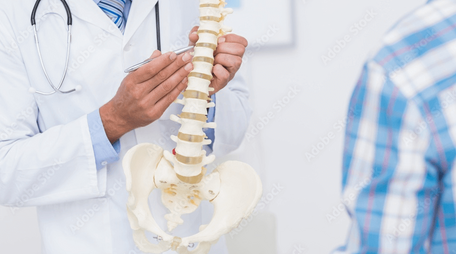Introduction
The most common reason why people over 65 have spine surgery is lumbar spinal stenosis. Lumbar spinal stenosis is a term used to describe a condition where patients present with nerve symptoms in their legs such as nerve pain, pins and needles or numbness due to narrowing of the space for the nerves in the lumbar (lower back) area of the spine.
It is very common to see narrowing of the space for the spinal nerves on medical images such as MRI scans and most of the time it is does not cause any symptoms. However, in a small proportion of patients the narrowing can cause nerve symptoms and in a very small number of cases weakness in the leg. Some people are born with a narrow spine but most people who develop spinal stenosis, it occurs because of normal age-related changes. It is estimated that 9% of the general population have lumbar spinal stenosis, which increases to 49% of people over the age of 60.
Webinar on nonsurgical management of lumbar spinal stenosis
In January 2022 EUROSPINE held a webinar for spine care clinicians. The focus of the webinar was on the nonsurgical management of lumbar spinal stenosis.
Research on surgical vs nonsurgical treatment
In 2016, a high-quality review investigating the relative benefits of surgery and non-surgical care for lumbar spinal stenosis, reported no clear benefit for surgery over non-surgical treatment (A plain language summary of this review can be found using the following link: www.cochranelibrary.com). However, the authors of the review reported that there has not been a lot of very good quality studies investigating this to date. They also reported a complication rate of between 10-24% in people who had surgery for spinal stenosis. It is worth noting that two thirds of people who develop nerve symptoms due to lumbar spinal stenosis will improve and there is no evidence that delaying surgery to allow a trial of non-surgical treatment results in a poorer outcome (however, there may be very specific situations such as when a patient has developed weakness in their legs, when surgery is recommended as a first line of treatment). Patients with lumbar spinal stenosis who have persistently disabling symptoms despite a trial of nonsurgical care should be referred for a surgical opinion.
Non-surgical management
Research has reported that most people with lumbar spinal stenosis are overweight and take little or no exercise. In 2021, a new clinical practice guideline was published by a research group in Canada that recommended that patients seeking non-surgical treatment for lumbar spinal stenosis should receive a package of care which includes education, guidance, and support to gradually increase their physical activity levels and improve their nutritional intake and a personalized exercise programme. A realistic goal for patients with lumbar spinal stenosis is to gradually increase their physical activity levels by small amounts and to focus on gentle forms of exercise such as cycling and walking. Using an activity monitor (i.e. Fitbit©) can be very helpful in motivating patients and allowing them to measure the improvement in their performance. Treatment may also include a package of care which includes manual therapies such as manipulation, behavioral change techniques, and an individually tailored exercise programme. The guideline advised that patients may trial specific medications for their nerve symptoms that are also used to treat depression and may also consider a trial of acupuncture. However, the guidelines also recommended that patients with lumbar spine stenosis should not be prescribed anti-inflammatory medications, strong painkillers including opioids, muscle relaxants, anti- seizure neuropathic medications or referred for epidural steroid injections.
Summary written by Caroline Treanor, Patient Line Committee Member
Edited by Dr Derek Cawley, Patient Line Committee Chair
Disclaimer:
This is a synopsis of the research presented at a recent EUROSPINE webinar summarised by the Patient Line Committee for the purpose of this blog on the Patient Line website, and doesn’t represent EUROSPINE’s official stance.



